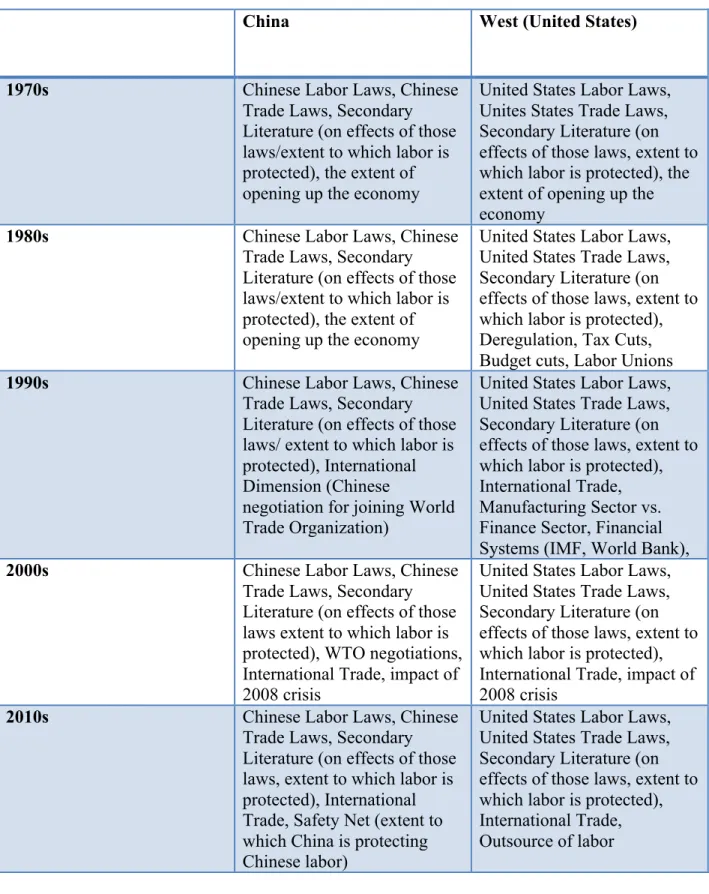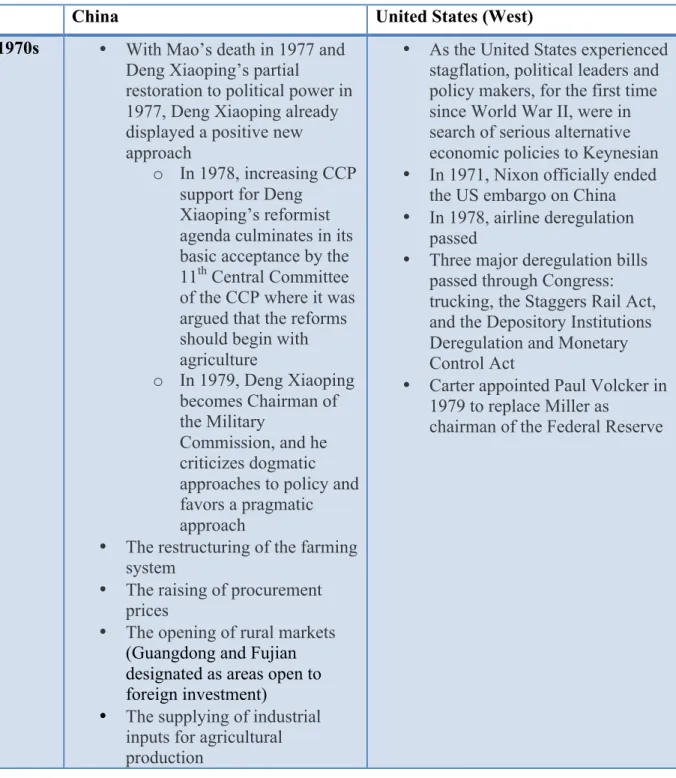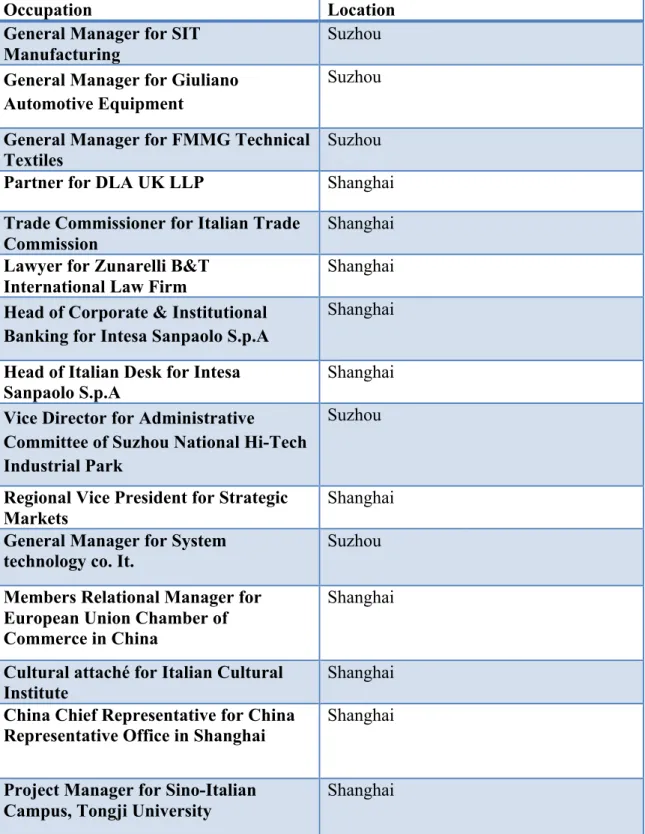This dissertation examines the long-term evolution of legislation that contributed to China's shift from a command economy to an economic powerhouse in the capitalist world economy. Few have debated whether the concept of neoliberalization, defined as the process of adapting fiscally conservative and expert-oriented policies, explains the long-term trend in Chinese development. Therefore, this thesis seeks to determine whether China is developing towards or away from the neoliberal model.
Using interview data based on 15 interviews of foreign entrepreneurs working in Shanghai or Suzhou, this thesis uses the. Based on the information gathered from the literature on the Chinese development of wage and labor laws and the qualitative data in the interviews, this thesis found surprising similarities in Chinese and American policies, consequences of those policies that were. This thesis concludes, based on the policies implemented during the 2000s and 2010s, that this neoliberal direction is shifting in both countries, and a different kind of model is taking shape in both China and the US that diverges of neoliberalism.
IS CHINA NEOLIBERAL?
In my fifth and final chapter, I will use the information gathered from the literature of the previous chapters and the qualitative data in the interviews to draw a conclusion about whether China's laws are becoming more or less close to the neoliberal principle over time. Reagan's campaign against big government began to reshape the country in the 1980s. The large scales of transformation of the global economy—neoliberalization and financialization—that took place in the 1980s cannot be explained without one.
Other scholars point to the various impacts and implications of recent economic crises to illustrate the “diversity in implementation and. Analyzing in parallel the evolution of the main features of neoliberalism in the West with the evolution of the main features of neoliberalism in China, I chose to use the United States to represent the West. The United States is the best country to compare with China in the context of neoliberalization since the United States was the engine of neoliberalism.
In the 2000s, in addition to trade and labor laws in China and the United States, I will also use the 2008 crisis as an indicator for China and the United States, as the crisis of neoliberalism was embodied in the 2008 US financial crisis , which catalyzed a series of successive financial crises around the world (Dutta, 2015).

DECADE-BY-DECADE ANALYSIS
Lifting the remaining controls on oil and gasoline that had been in place since Nixon's. Between 1993 and 2000, the United States showed the best economic performance of the past three decades. The shift of the tax policy in 2005 from an active one to a cautious one, as well.
In March 2013, Xi Jinping was elected as the 7th President of the People's Republic of China. During the first phase of the reform, the main goal was to restructure the agricultural system due to the many problems that the leadership faced immediately. In his 1979 State of the Union address, “Carter declared that government could no longer solve the people's problems.
The reform of the enterprise system is another key event in this decade. The release of the document “On Reform of Economic Structures” by the CCP in 1984 marked an important milestone in the strengthening and expansion of China's economic reforms (Tisdell, 2008). The subsequent devaluation of labor and the persistent relative deterioration of the position of the working class everywhere put downward pressure on wage rates and working conditions (Harvey, 2003).
The textile and apparel industry accounted for 18.9 percent of the country's total manufacturing employment” (Chan and Nadvi, 2014, p. 515). Evidence of this comes in the form of the three new labor laws passed in 2007, which were employment. All the economic changes made by the Chinese leadership in the 2000s are put to the test with the global financial crisis of 2008.
During the first decade of the 21st century, “there was a major terrorist attack, a housing market collapse, a severe economic recession, and a significant downturn in the US. In 2008 there was the problem of the double combination of real estate and running a bank like in the great depression. The first trend is the growth of the US economy, especially since “the latest figures released by the US.

COMPARISON OF CHINA AND THE UNITED STATES
Deregulation in the US happened at the same time as in China, just in different industries. In the United States, one of the first supply chain reforms was attempted. More economic parallelism can be seen in China and the United States in the early 1990s, when both countries experienced problems with their economies.
The United States introduced major tax reforms beginning in the 1980s, and the Chinese leadership, while initially hesitant to make major changes to tax policy, began major reforms in the 1990s. Parallelism between China and the United States can also be seen in the 1990s based on the flourishing inequality and reduced welfare for citizens. Through my analysis of the economic reforms in China and the United States decade by decade, from the 1970s to the 2010s, I found surprising similarities in Chinese and American policies, effects of those policies that were complementary, and a clear neoliberal direction in the 1980s -1990s in the United States and China.
In the next chapter, I will discuss how a subset of international entrepreneurs also experience such a departure from the neoliberal model in China. After analyzing the economic reforms in China and the United States decade by decade in the previous chapter, I came to the conclusion that in the 2000s-2010s decades the neoliberal direction is shifting in both countries, and a different kind of model is at work to take shape in China and the United States that deviate from neoliberalism. Such sectors are traditionally dominated by the state, which shows that the Chinese government has a large influence in the amount and nature of investment in China.
This is how lobbyists in the West talk to politicians, here they talk directly to the bureaucracy. Because of these overall themes in the interviews, I came to the conclusion that the entrepreneurs also experienced such a deviation from the neoliberal model in China. Because Chinese development was crucial to enabling Western neoliberalism, this thesis aimed to study the relationship between China and the neoliberal model in the long term.
Since both countries were strongly committed to their overall economic strategy in the 1990s, a parallelism between China and the United States can also be seen based on the. After 2008, both countries appear to be simultaneously moving away from the neoliberal model, evidenced by the policy changes implemented in the 2000s and 2010s to enable states to regain control of markets and refocus the market economy on social issues. In the 2000s, China began to pay more attention to China's income distribution system, social welfare system, energy issues and the quality of the economy.
INTERVIEWS- PERCEPTION OF CHINESE TRADE AND LABOR BY
CONCLUSION
In order to determine whether neoliberalism can be used to explain Chinese development, this thesis analyzed the key economic reforms and indicators of neoliberalism in China and the United States decade by decade, from the 1970s to the 2010s, as well as extracting themes from interview data. on 15 interviews of foreign entrepreneurs working in Shanghai or Suzhou. Three research questions were posed to determine the long-term evolution of legislation that contributed to the shift of China from a command economy to an economic powerhouse in the capitalist world economy. My conclusion comes from the following key agreements between China and the United States in each decade.
There was a striking parallelism in the economic situation in the United States and China in the 1970s, despite the countries being completely Throughout the 1980s and 1990s, both China and the United States were moving in a clear direction of neoliberal policy since the neoliberal elements of privatization, deregulation, cuts in public spending, floating exchange rates, protection of property rights , trade and investment liberalization, and the limits of state power can be seen in China and the United States during these two decades. As addressed in the previous research question, there was a trend of convergence between Western and Chinese political economies, and this trend has changed in the way that the United States and China were moving in a clear neoliberal direction in the 1980s and 1990s, but, after analyzing Chinese and American reforms in the decades of 2000-2010, I concluded that this neoliberal direction changed in both countries and a different kind of model is taking shape in both China and the US that divergence from neoliberalism since the policies that are being implemented in all those countries. decades run directly counter to core practices of neoliberalism.
Or should a different concept be used instead?” After analyzing the key indicators of neoliberalism in each decade in the United States and China and extracting themes from the interview data of foreign entrepreneurs in China, this dissertation concludes that China is moving away from the neoliberal model. Although the policies implemented in recent decades are not neoliberal, the concept of neoliberalism can be used to explain such reforms because the policies implemented are in direct conflict with the core practices of neoliberalism. China's departure from the neoliberal model is reflected in the policy changes being implemented to enable states to reassert control over markets and the economy.
The Chinese leadership continues to deviate from the neoliberal path in the current decade and further focuses on the improvement of the socialist market economy, ensuring the healthy and lasting development of the economy to continuously improve the people's living standards, the development of the rural economy. , and create new jobs for the population. 2009) 'The crisis of neoliberalism and the future of international institutions: a comparison of the IMF and the WTO' Theory and Society, Vol. 2012). Thornton China Center at Brookings Monograph Series, 6. China and the WTO: The Politics Behind the Agreement,” The.
Trump and the crisis of the neoliberal world order. https://isreview.org/issue/105/trump-and-crisis-neoliberal-world-order.
